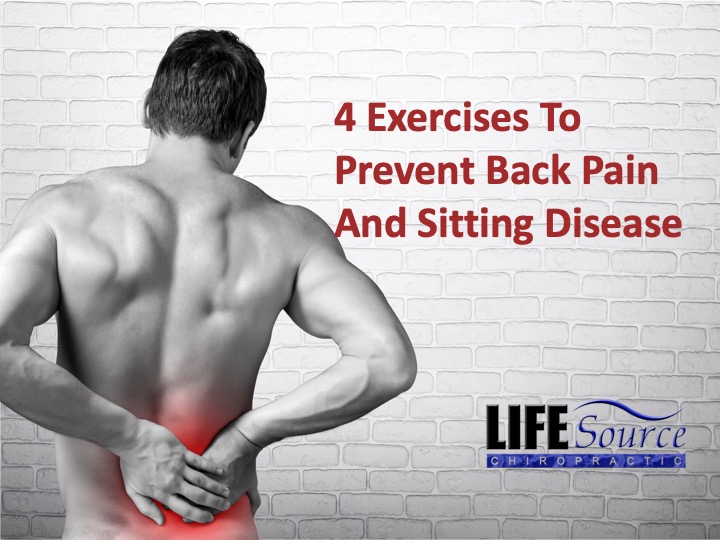SITTING DISEASE
Eighty percent of adults will experience some type of back pain in their lives, and according to a study by the Mayo Clinic, back pain is the third most common reason that people visit a doctor. So Why? Well, the culprit may not be what you would think. It’s not the strenuous exercise or physical work (as long as you have correct lifting techniques) that cause the problems so much as it is the sedentary lifestyle. Our body was born to move. It loves motion, but when we sit all day, it can cause more damage than physical activity. Research shows that the average person is sitting twelve hours per day. We are sitting so much that the scientific community has coined the phrase “Sitting Disease.” Sitting Disease encompasses all the metabolic and physical problems that accompany a sedentary lifestyle. Low back pain is a significant effect of Sitting Disease.
THE BEST TREATMENT
The approach commonly taken by individuals is the “wait and treat” method. Wait for a symptom to occur and then try to treat it without regard to the cause. This approach is failing. Too many people are getting on dangerous medication with horrible side effects. The opioid crisis is partly fueled by medical professionals, insurers’, and employers’ approach to back pain. This never addresses the problem, and most people are tired of just covering up a symptom. Less and less people seek the pill first and want true correction.
Sitting Disease causes damage to the spine. If you have any symptom of pain, it is your body telling you there is a more significant problem than just pain. If this is the case, it is vital that you get evaluated by a “corrective care” chiropractor so to get to the cause and fix it long term. The stress that created the damage never ends, so we must correct the damage and reduce the stressful effects of everyday living.
WHAT IS CAUSING THE PAIN
The pain is caused when we have a misalignment in the spine that is affecting a nerve. The pain can also be caused by stressing the soft tissue around a joint like the Sacro-iliac (your hip joint in the back), or a vertebral joint in the spine. So why the misalignment? This is where the sitting disease comes into the conversation. If you spend most of your time sitting, then the legs remain bent for the majority of the time. When the legs are bent, the hamstrings (muscles on the back of your thigh) are slackened off. If you remain in this seated position for too long, then the body will draw in the slack from the hamstrings.
Later, when you come to stand and straighten the legs, your hamstrings will feel tighter. The hamstrings attach to the lower part of your pelvis, and when they are tight, they can put the pelvis into rotation and cause pain in the SI joint/Hip joint in the back. A similar situation happens with the quadriceps (the muscles on the front of the thigh). These attach to the front part of the lower pelvis.
Another culprit can be tight hip flexor muscles like the psoas muscles. This can put pressure on the lower spine and create the misalignment in that lower back that will put pressure on the nerves in your spine.
Let’s not forget about the dreaded SCIATIC pain. Misalignment in the lower spine and pelvis plays the biggest roll in pain, but we can also look at the piriformis muscle, that when tight due to the pelvic rotation, can put pressure on the sciatic nerve at the lower part of your glute muscles (butt muscles).
Here are four exercises that will help reduce the effects of Sitting Disease.
Hamstring stretch
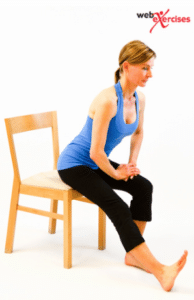
While sitting on a chair, fully extend legs so that the heels are contacting the floor with toes pointing upward. While maintaining a flat back position, lean forward until a gentle stretch is felt behind the thigh. Hold for 20-30 seconds Alternate sides.
Psoas Stretch
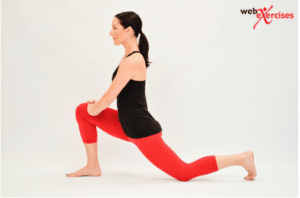
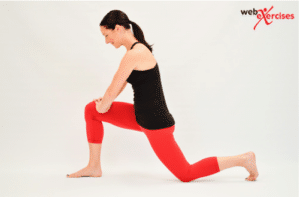
Start in a lunge with the back knee down. Pull the belly back by gazing at the navel.
Piriformis Stretch
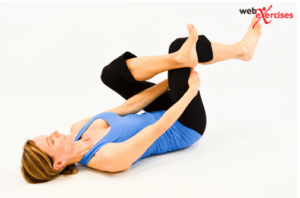
Grasp uncrossed leg under thigh and gently pull toward chest. A stretch in hip of crossed leg should be felt. Hold for 20-30. Alternate sides
CAT/CAMEL Stretch
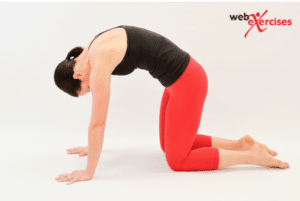
Begin on floor on hands and knees. Hips should be above knees and shoulders above hands. Attain a straight spine position. Round your back upward, stretching mid-back between the shoulder blades. Relax and let your stomach fall downward as you arch your back. Hold each position 3-5 seconds and repeat
One of the benefits of being a patient at Life Source Chiropractic is that we utilize the WebExercise software to prescribe therapy to our patients. It is one of the top softwares in the field of physical therapy and is a great compliment to chiropractic care. For more information, or if you would like to get your spine evaluated to see if you have damage from Sitting Disease, contact us, or call 402-934-4220.


